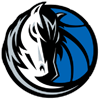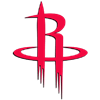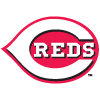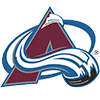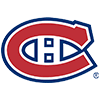It's time for a stroll down the Left On Base rate (LOB%) path. It's not the most exciting or sexy of topics, but it's one of those categories that fall under the "luck" umbrella with HR/FB and BABIP. I'm going to start with just the basics and move on to what can be predictive.
Most of this article is full of graphs and math and nerdy stuff. I can't just make any claims out of thin air, so I'll show my work. As long as a person trusts my analysis, they can skip to the conclusions where I summarize the findings.
The Nerdy Math Stuff
In all fairness, the math isn't that hard, but it is a ton of numbers that can blend together. If anything doesn't make sense, please let me know in the comments.
The first bit of reference information is the historic LOB% values over the past few seasons.
Season | LOB% |
|---|---|
2010 | 72.2% |
2011 | 72.5% |
2012 | 72.5% |
2013 | 73.5% |
2014 | 73.0% |
2015 | 72.9% |
2016 | 72.9% |
2017 | 72.6% |
2018 | 72.8% |
2019 | 72.3% |
2020 | 71.8% |
2021 | 72.1% |
The range isn't even two percentage points, with a value near 72.5% to be expected.
The next items I examined were the stats that help determine a pitcher's LOB%. Two factors, BABIP and strikeout rate (K%), were the two main ones, with home run rate (HR/9), walk rate (BB%) and groundball (GB%) the next closest. Here are the r-squared (i.e. correlation) between a pitcher's LOB% and the five stats at different inning
It's time for a stroll down the Left On Base rate (LOB%) path. It's not the most exciting or sexy of topics, but it's one of those categories that fall under the "luck" umbrella with HR/FB and BABIP. I'm going to start with just the basics and move on to what can be predictive.
Most of this article is full of graphs and math and nerdy stuff. I can't just make any claims out of thin air, so I'll show my work. As long as a person trusts my analysis, they can skip to the conclusions where I summarize the findings.
The Nerdy Math Stuff
In all fairness, the math isn't that hard, but it is a ton of numbers that can blend together. If anything doesn't make sense, please let me know in the comments.
The first bit of reference information is the historic LOB% values over the past few seasons.
Season | LOB% |
|---|---|
2010 | 72.2% |
2011 | 72.5% |
2012 | 72.5% |
2013 | 73.5% |
2014 | 73.0% |
2015 | 72.9% |
2016 | 72.9% |
2017 | 72.6% |
2018 | 72.8% |
2019 | 72.3% |
2020 | 71.8% |
2021 | 72.1% |
The range isn't even two percentage points, with a value near 72.5% to be expected.
The next items I examined were the stats that help determine a pitcher's LOB%. Two factors, BABIP and strikeout rate (K%), were the two main ones, with home run rate (HR/9), walk rate (BB%) and groundball (GB%) the next closest. Here are the r-squared (i.e. correlation) between a pitcher's LOB% and the five stats at different inning thresholds.
All Pitchers | BABIP | K% | HR/9 | BB% | GB% |
>20 IP | 0.18 | 0.10 | 0.02 | 0.00 | 0.00 |
>40 IP | 0.18 | 0.15 | 0.04 | 0.00 | 0.00 |
>60 IP | 0.21 | 0.21 | 0.04 | 0.00 | 0.00 |
>80 IP | 0.22 | 0.18 | 0.03 | 0.01 | 0.00 |
>100 IP | 0.21 | 0.17 | 0.02 | 0.00 | 0.01 |
>120 IP | 0.21 | 0.18 | 0.02 | 0.01 | 0.01 |
>140 IP | 0.22 | 0.19 | 0.02 | 0.01 | 0.01 |
>160 IP | 0.22 | 0.19 | 0.01 | 0.01 | 0.01 |
Starters | BABIP | K% | HR/9 | BB% | GB% |
>20 IP | 0.25 | 0.14 | 0.03 | 0.01 | 0.00 |
>40 IP | 0.22 | 0.18 | 0.03 | 0.01 | 0.00 |
>60 IP | 0.22 | 0.19 | 0.03 | 0.01 | 0.01 |
>80 IP | 0.21 | 0.18 | 0.03 | 0.01 | 0.01 |
>100 IP | 0.21 | 0.18 | 0.02 | 0.01 | 0.01 |
>120 IP | 0.21 | 0.19 | 0.02 | 0.01 | 0.01 |
>140 IP | 0.22 | 0.19 | 0.02 | 0.01 | 0.01 |
>160 IP | 0.22 | 0.19 | 0.01 | 0.01 | 0.01 |
>180 IP | 0.26 | 0.19 | 0.00 | 0.01 | 0.03 |
Relievers | BABIP | K% | HR/9 | BB% | GB% |
>20 IP | 0.15 | 0.07 | 0.02 | 0.00 | 0.00 |
>40 IP | 0.15 | 0.09 | 0.02 | 0.00 | 0.00 |
>60 IP | 0.17 | 0.15 | 0.02 | 0.00 | 0.00 |
>80 IP | 0.26 | 0.15 | 0.06 | 0.00 | 0.00 |
>100 IP | 0.26 | 0.08 | 0.03 | 0.02 | 0.00 |
All pitchers | BABIP | K% | HR/9 | BB% | GB% |
<40 IP | 0.17 | 0.05 | 0.01 | 0.00 | 0.00 |
<60 IP | 0.16 | 0.06 | 0.02 | 0.00 | 0.00 |
BABIP is the leading cause in all instances while strikeout rate becomes more and more of a factor in large samples.
Looking at all the pitchers from 2010 who threw 20 innings, they had an average LOB% of 72.1 % (median = 72.4%) with a standard deviation of 6.6 percentage points.
From this same sample of pitchers, I grouped them by how many deviations their LOB% is from the mean and then averaged the five stats. Here are the average results from the six groups:
StdDev | IP | LOB% | BABIP | K% | BB% | HR/9 | GB% |
|---|---|---|---|---|---|---|---|
>2 | 61.7 | 89.0% | .240 | 23.8% | 8.1% | 1.30 | 41.6% |
1 to 2 | 128.0 | 80.8% | .271 | 22.9% | 7.6% | 1.10 | 43.2% |
0 to 1 | 138.1 | 75.0% | .289 | 20.5% | 7.8% | 1.14 | 43.9% |
-1 to 0 | 121.7 | 69.2% | .302 | 18.6% | 8.0% | 1.22 | 44.0% |
-2 to -1 | 74.3 | 63.0% | .318 | 16.5% | 8.5% | 1.37 | 43.4% |
<-2 | 39.9 | 55.4% | .328 | 16.6% | 8.9% | 1.71 | 41.5% |
Again, BABIP and K% show a heavy correlation and not so much with the other three.
Working with the same set of pitchers, I ran a linear regression with just K% and BABIP to predict LOB% and ended up with the following projection.
LOB% = -0.750 x BABIP + 0.343 x K% + 0.879
With HR/9 in the equation, the r-squared goes from .251 to .259 (with significant p-values). Probably those creating projections will incorporate the home run rate, but I'm not splitting hairs that fine. I'd rather keep it simple.
I plugged in various BABIPs and strikeout rates to the LOB% projection equation for different BABIPs and K%.
BABIP\K% | 5% | 10% | 15% | 20% | 25% | 30% | 35% | 40% |
.250 | 70.8% | 72.6% | 74.3% | 76.0% | 77.7% | 79.4% | 81.1% | 82.8% |
.260 | 70.1% | 71.8% | 73.5% | 75.2% | 77.0% | 78.7% | 80.4% | 82.1% |
.270 | 69.3% | 71.1% | 72.8% | 74.5% | 76.2% | 77.9% | 79.6% | 81.3% |
.280 | 68.6% | 70.3% | 72.0% | 73.7% | 75.5% | 77.2% | 78.9% | 80.6% |
.290 | 67.8% | 69.6% | 71.3% | 73.0% | 74.7% | 76.4% | 78.1% | 79.8% |
.300 | 67.1% | 68.8% | 70.5% | 72.2% | 74.0% | 75.7% | 77.4% | 79.1% |
.310 | 66.3% | 68.1% | 69.8% | 71.5% | 73.2% | 74.9% | 76.6% | 78.3% |
.320 | 65.6% | 67.3% | 69.0% | 70.7% | 72.5% | 74.2% | 75.9% | 77.6% |
.330 | 64.8% | 66.6% | 68.3% | 70.0% | 71.7% | 73.4% | 75.1% | 76.8% |
.340 | 64.1% | 65.8% | 67.5% | 69.2% | 71.0% | 72.7% | 74.4% | 76.1% |
.350 | 63.3% | 65.1% | 66.8% | 68.5% | 70.2% | 71.9% | 73.6% | 75.3% |
Even the most extreme pitching profile should not project a pitcher for a LOB% under 65% or over 80%.
While a pitcher's strikeout rate stabilizes fairly quickly (70 BF), it takes 2000 balls in play (~5 full seasons for a starter) for BABIP to stabilize. A pitcher should not be expected to have a BABIP over .325 or under .275 based on historical examples. If a pitcher is going to have LOB% out of the norm, it needs to be strikeout driven.
Just to verify my intuition, I compared the year-to-year correlation of the three factors (2010 to 2021, min 20 IP) and end up with the following r-squared values:
Stat: y2y r-square
- LOB%: .016
- K%: .519
- BABIP: .025
As expected, the LOB% correlation is almost negligible since it relies on BABIP.
Several narratives exist on why a pitcher might have a low or high LOB%. One theory on LOB% is that some pitchers are better than others out of the stretch. Also, there is the theory that some pitchers fall apart once a runner is on base. If they are true, the LOB% would have some season-to-season stickiness. It just doesn't and any future analysis should focus on BABIP projections.
One possible explanation for the lack of season-to-season correlation is that the pitcher knows he has an issue out of the stretch. During the offseason, they could work to correct the problem.
Conclusions
- The average LOB% last season was 72.6%. The average has ranged from 71.8% to 73.5%
- A pitcher's BABIP and K% are the main inputs to a high LOB%. In small samples, home runs allowed can be a factor.
- To predict LOB%, I found the following LOB% projection equation: LOB% = -0.750 x BABIP + 0.343 x K% + 0.879. The formula was be used to create the following table.
BABIP\K% | 5% | 10% | 15% | 20% | 25% | 30% | 35% | 40% |
|---|---|---|---|---|---|---|---|---|
.250 | 70.8% | 72.6% | 74.3% | 76.0% | 77.7% | 79.4% | 81.1% | 82.8% |
.260 | 70.1% | 71.8% | 73.5% | 75.2% | 77.0% | 78.7% | 80.4% | 82.1% |
.270 | 69.3% | 71.1% | 72.8% | 74.5% | 76.2% | 77.9% | 79.6% | 81.3% |
.280 | 68.6% | 70.3% | 72.0% | 73.7% | 75.5% | 77.2% | 78.9% | 80.6% |
.290 | 67.8% | 69.6% | 71.3% | 73.0% | 74.7% | 76.4% | 78.1% | 79.8% |
.300 | 67.1% | 68.8% | 70.5% | 72.2% | 74.0% | 75.7% | 77.4% | 79.1% |
.310 | 66.3% | 68.1% | 69.8% | 71.5% | 73.2% | 74.9% | 76.6% | 78.3% |
.320 | 65.6% | 67.3% | 69.0% | 70.7% | 72.5% | 74.2% | 75.9% | 77.6% |
.330 | 64.8% | 66.6% | 68.3% | 70.0% | 71.7% | 73.4% | 75.1% | 76.8% |
.340 | 64.1% | 65.8% | 67.5% | 69.2% | 71.0% | 72.7% | 74.4% | 76.1% |
.350 | 63.3% | 65.1% | 66.8% | 68.5% | 70.2% | 71.9% | 73.6% | 75.3% |
- When it comes to predicting LOB%, most of the projection will be strikeout driven since BABIP takes so long to stabilize.
The big takeaway for me after sifting through the information is that LOB% is nearly impossible to predict from season to season because of BABIPs pull on it. If any pitcher is projected for a high LOB%, make sure to dig and find the cause.








